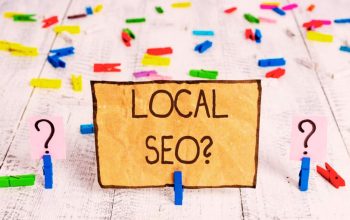Advanced Segments are among the most powerful features of Google Analytics. They allow you to break down visitor traffic as you like to make assumptions about their behavior.
In fact, if you are starting to analyze your site with Analytics, you will soon realize how difficult it is to make decisions by only looking at the analytical data in the aggregate, especially if you deal with Ecommerce!
Indeed, in the default reports, as they appear on the Analytics dashboard, you see many totals and averages but of an audience considered homogeneous and undifferentiated.
Imagine having a shop where only hooded people enter, of whom you know nothing, neither gender, nor geographical origin, nor personal tastes: you only know that they enter and that occasionally someone buys.
Studying a promotion strategy with these customers is impossible. The same goes for your e-commerce. To increase conversions to your site, you must first understand your potential customers, study their habits, and understand their logic and ways of thinking; in a word, you must get to know them.
Only in this way will you know if your online store meets its specific needs or if it has gaps that hold back purchases.
And it is at this point that the advanced segments come into play, with which you can combine Dimensions and Metrics to decide which portions of traffic to isolate and set ad hoc strategies to get more conversions.
In this article, I want to show you 7 advanced segments that can help you immediately focus on your target. Let’s see them one by one.
Table of Contents
Discover (really) new visitors
One of the first questions you want to be answered is the percentage of new visitors who land on your site. By isolating this traffic segment, you will see how people who know nothing about your business move, which categories they enter, which products catch their attention, and possibly what they buy.
Simple, you’ll think. In fact, the very general data you find in Audience => Overview => All sessions immediately presents a metric that indicates the percentage of new visitors, complete with a pie chart compared to returning visitors.
However, the data is very approximate. For example, if a user who knows your brand well accesses from a friend’s computer by typing the URL directly or by searching for your brand on Google search, he is counted as a new visitor! For this, you need to create a more “intelligent” segment to isolate users who really visit your site for the first time.
To do this, go to Add Segment => + New Segment => Sequences. Recreate the sequence of filters I’ve set up below and named “Really New Users.”
- Include users that Analytics reports as New. These people have no cookies on their computers indicating that they have been to your site before.
- Exclude visitors who land directly on your site by typing in the URL. Since they know the address of your website, it is logical to think that it is not the first time they have come to visit you (with exceptions such as advertising campaigns aimed at generating traffic, but that’s another matter)
- Finally, exclude searches for keywords in the Google SERP containing your brand’s name for the same reason as in the previous point.
Voila! With the filters you have set, you will be able to have a much more accurate estimate of new visitors to your site. To confirm this, try selecting the newly created “Really New Users” segment and compare it to the pre-set Analytics segment “New Users.” It also leaves the “All Sessions” segment for now.
View? The “New Users” segment (green line) indicates 62.65%, while the “Really New Users” segment (orange line) indicates 54.25%. That 8% or so difference indicates the accuracy of the segment you just created. You may think 8% is irrelevant; in the case in question, it indicates a thousand people, but if taken to e-commerce sites that make large numbers, I assure you that it becomes an absolutely not negligible value!
How many visits does it take before a conversion?
If you have an e-commerce that sells or a page on which you are generating leads, I recommend dividing your conversion traffic into 3 groups:
1) users who convert on 1 visit
2) those that convert after 2-4 visits
3) those who convert after the 5th visit
Study their behavior, see if they move differently, and through which pages they pass along the conversion funnel. You will be able to realize the friction points that hold back the purchase and develop optimization strategies.
Morning, afternoon, evening, or night. When do your users visit you most often?
What are the moments of the day when your customers are more likely to visit your site? This is a fascinating question, which will allow you to understand various issues, such as, for example, what is the right time to send email marketing campaigns or to have your Pay per Click advertising appear on Google, or at what times to devote more attention to customer service and the site’s Live Chat.
To know the times of day when users visit you most often, set a time filter for each segment:
Morning: Time > 6 and <12
Afternoon: Time >12 and <18
Evening: >6pm and <midnight
Night: >0 < 6
Thus you will be able to have a general estimate of your visitors’ behavior in the 4 arcs of the day and also see when they are more inclined to buy.
You can customize this segment as you like, for example, by comparing office hours vs. free time or any other strategy that has to do with the times of the day.
Customers who arrive at their cart and then leave. Sort them by source.
One of the fundamental questions that every e-commerce manager tries to answer is why so many people abandon their cart without completing the checkout. However, the answer varies greatly depending on the traffic source that brought them to that point on the site.
With this segment, you will be able to isolate users who come from a source (in the example of Facebook, but you can enter the sources that interest you most) up to the last step of the shopping cart, and in the best case, they don’t buy.
Paid traffic that doesn’t bounce
Have you set up an SEM campaign with Google Adwords and can’t wait to know what the results are? Remember that Adwords can tell you if the visitor has landed on your landing page: from then on, Analytics will indicate their behavior within the site.
One of the first things you’ll want to do is sort out the visitors who immediately bounce off your page from those who continue browsing. To do that, you can set up this simple segment:
Set as a condition the medium that corresponds to the CPC (your advertisements, for the time being, are treated generally as a single traffic source). Then set up a filter to indicate only pageviews > 1 to exclude so-called “bounces.”
Conversions that come from organic searches
How many users make a purchase on your site following a keyword search on Google? The answer to this question may open up various scenarios related to SEO optimization and the definition of winning keywords.
As you can see, I’ve also set the filter to exclude organic searches for your brand name. I tend to consider this type of traffic as direct, as many people find it more convenient to search through Google Serp than write the exact address of the URL.
Conversions that come from Facebook
You will have countless conversion statistics if you have a PPC campaign on Facebook. But what about all your indirect marketing activity on your Facebook page? For example, how to track a visitor who clicks on one of your posts, is sent back to the site, and then makes a purchase?
Try copying this segment.
The formula
Source ⇒ Matches RegEx (Regular Expression) ⇒ facebook\.com
Contains a regular expression, a particular type of logical formulation that serves to specify better the conditions to be highlighted.
Specifically, the sign indicates that the source must come from a URL containing the word Facebook, followed by any other word. You can change the word “Facebook” to “Twitter” or “LinkedIn” to highlight different types of social sources that convert visitors into customers.
These are just some examples of Advanced Segments that you can create with Google Analytics. Combining them with different dimensions and metrics, you will be able to have more accurate data on the behavior of your users and try to make optimization hypotheses.
Also Read : From Multicloud To The Metaverse: The 6 Significant Tech Trends Of 2023




